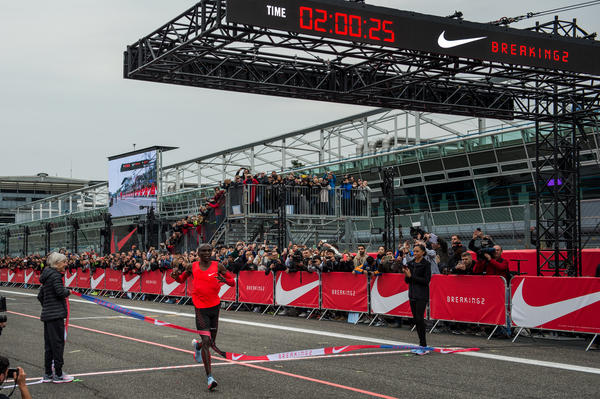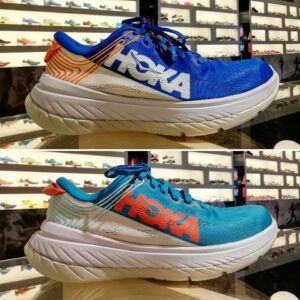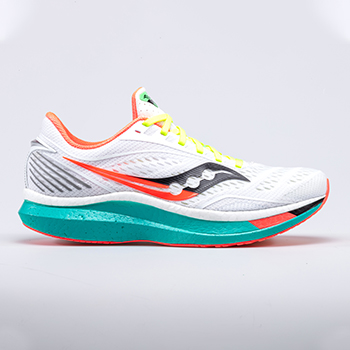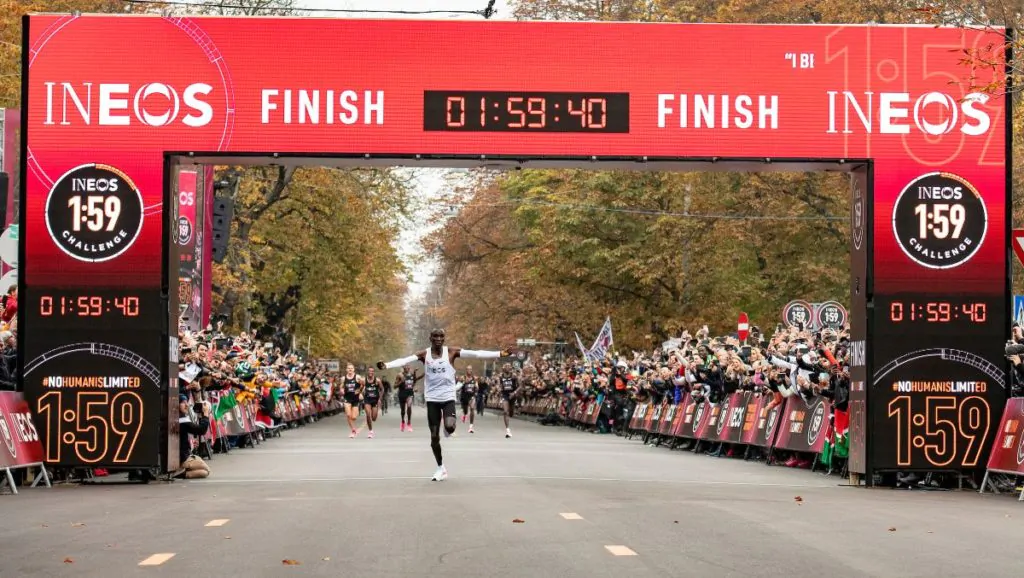Running a marathon under 2 hours? Done!
Reshaped world records over virtually every distance? Done!
And whose credit is it? The shoes or the athletes’ determination in training?
The answer is obviously tendentious: the best of shoes will not be enough to make us salon athletes into heroes to be incensed!
But it is a fact that all these monstrous performances have come from phenomena who literally wore wings… or springs on their feet.
A large part of these performances were achieved by Nike-sponsored athletes.
As early as 2017, with the first attempt to break the 2-hour wall over the queen distance (the famous Breaking Two, shaded by a mere 25 seconds!), the Beaverton-based company developed carbon foil technology to be inserted into the midsole of running shoes, to transmit a huge forward thrust with every step.
In general, Nike has always tried to combine this propulsion with excellent cushioning to make the shoes comfortable even after many kilometres and with the inevitable onset of fatigue.
Nike’s reference models in this sector are the Vaporfly Next% and the Alphafly Next%, for racing, and the Zoom Fly 3, for training.

Another company that is bringing innovation and development to this concept, while remaining true to its own canons, is Hoka One One.
Instead, the Evo Carbon Rocket, launched on the market in February 2019, and the more exclusive CarbonX (on the list from June 2019), are born with the intention of restoring even more running ease than the ‘normal’ models of the Hoka house, already deeply characterised by cushioning at the highest levels and an easy and decidedly smooth roll.
What makes all the difference, at least in the Carbon X, is the perfect combination of the extreme comfort and cushioning typical of Hoka and the extraordinary reactivity provided by the carbon sheet, which again literally makes you fly and delays the onset of fatigue. It is no coincidence, in fact, that it achieved a new world record over the 50-mile distance (approx. 80 km), but is also very good over shorter distances, starting with the half marathon. Last but not least, it is certainly a model of shoe with a carbon blade suitable for both the fastest and most ambitious athletes and lesser runners.

Nike and Hoka are being inspired by all the remaining running shoe brands in an attempt to close the gap.
Brooks, for example, has just released the new Hyperion Elite, which promises to give the Vaporfly powerhouse a run for its money, while Saucony, for its part, will be coming out with two models equipped with a lamina: the Endorphin Pro, with a carbon plate, and the Endorphin Speed, with a TPU plate. Adidas, with the arrival of the new Adizero Pro, and New Balance, with the FuelCell 5820, are not to be outdone.

At this point, however, a consideration is in order. Taking into account the fact that we are talking about a technology that is truly appreciable by athletes of a certain level, the fact that the models presented so far have a limited mileage life and that, Hoka aside, the prices are also record-breaking, to what extent are we really willing to invest in lowering our personal ones?
And above all, is it not the case that by directing innovation (or imitation, in some cases) towards a single direction, that of carbon (technology for the few), we will end up neglecting historical models, those which, by their very nature and diversity, have made us attached to a specific brand or to running in general?
To posterity the arduous judgement!
 ITA
ITA
 DEU
DEU
 FRA
FRA
 ESP
ESP





